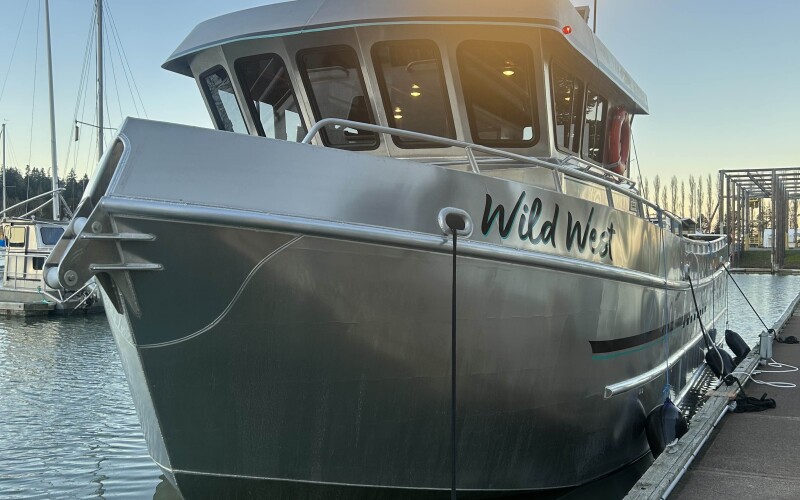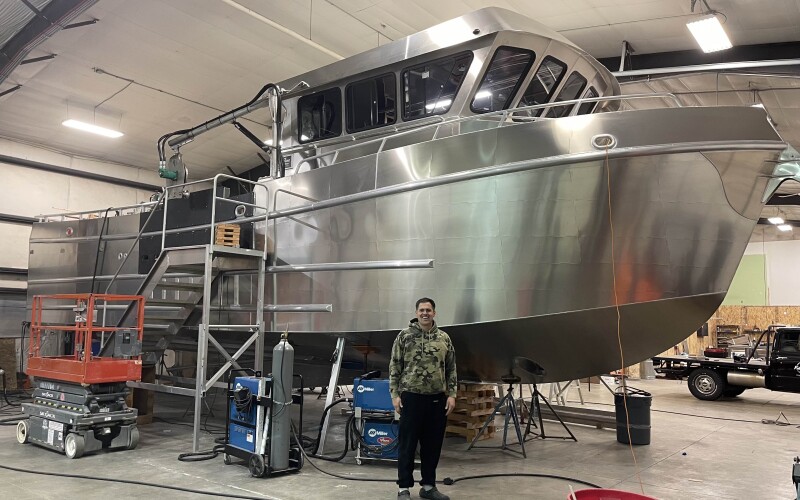Full Time Fabrication launches an in-house design for Swinomish fisherman. For the last seven years, Matt Johnston, a member of the Swinomish Tribe, has been bringing his 34-foot boat across the bar at Westport, Wash. "It’s scary sometimes," says Johnston. "The waves can get a little hairy in a small boat."
Johnston has been diving for geoducks, cucumbers, and urchins, but during covid, he leased a crab license and realized it was a fishery he could succeed in.
“I looked at how things were during covid, and I wasn’t sure, but coming out of it I figured I could make it and started looking for someone to build a boat. I checked around a few yards and they were booked a couple years out, then I called TJ Lowry, who I knew from when he worked at Maritime Fabrications – they built my first boat. He was just finishing up three Bristol Bay boats and could pretty much start right away, so I went with him.”
TJ Lowry started his boatbuilding company, Full Time Custom Fabrication and Machine Shop in Sedro-Woolley, Wash., in 2017 after several years working at Maritime Fabrications in nearby La Conner. “So far, we’ve built 6 Bay boats and now this crabber for Matt,” says Lowry. “We’re really excited about it. This is the first time this boat has been built. It’s an in-house design.”
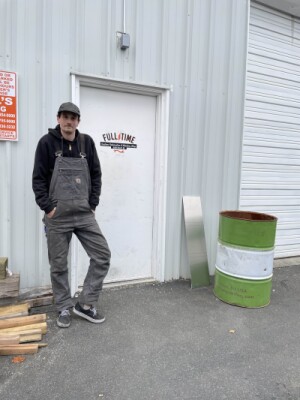
Having cut their teeth on Bay boats, the 47’ x 16’ crabber is the biggest boat the Full Time team has taken on.
“I worked with Tom Drake, who has a company called Cadre Marine. I kind of sketched out my ideas and he refined it and then did all the lofting and cut files.” Lowry notes that Drake designed a boat that made for an easy build. “He was a welder at Maverick when I worked there so he knows how things are done, so he’s not designing what can’t be built. I made only a few changes in the framing so that things went together in the order I wanted.”
Lowry had the aluminum plate cut at Alaskan Copper and Brass in Kent, Wash., and started the boat in June of 2023. “We build our Bay boats upside down,” he says. “I bought a crane to turn them over. But this one is big enough, we built it upright. I didn’t want to try and roll it over.”
Full Time Custom Fabrication is a 7,500-square-foot shop with an 11-person team, including Lowry. “We have some really great welders,” says Lowry. “We all do a bit of everything. We have a machinist, a carpenter, an electrician—we have a good group of guys. I could not do any of this without all of them.”
Lowry boasts a low turnover rate, and Full-Time is gaining a reputation as an ambitious group of young guys who do good work. “It seems like they are all really enjoying themselves,” says Johnston. “I’m amazed at how fast they put it together.”
Johnston’s new vessel, named Wild West, will have a John Deere 6090SFM85, 500 HP main engine, and a MER 28 kW genset. “It’s got a Twin Disc MG 5075A gear at 2.52:1,” says Lowry. “The shaft is 2 ½ -inch Aquamet, and the propeller is a Michigan Wheel Dynaquad, 32 x 28 four-blade stainless.” Lowry expects the power train to enable the Wild West to cruise at around 12 knots.
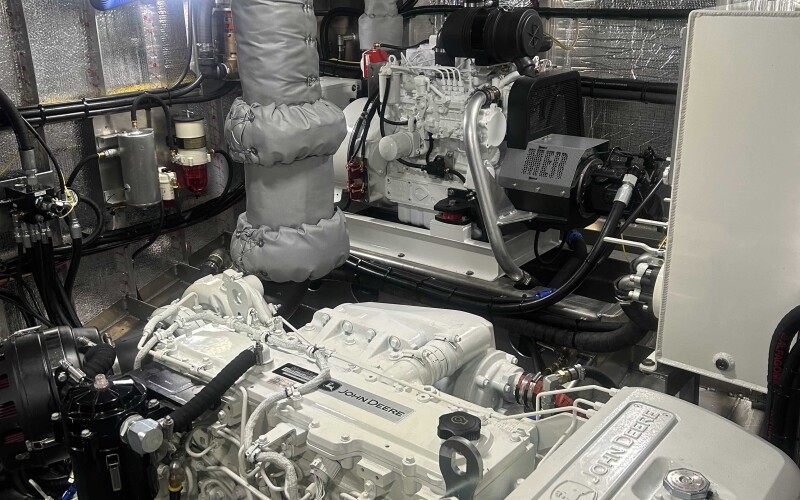
The engine sits ahead of the vessel’s fish hold, designed to hold 15,000 pounds of live crab. “With crab, you’ve got the hold filled all the way and flowing over as more water is pumped in so that the crabs don’t use up the oxygen and die,” says Lowry. “It’s got a Flowmax 15 pump that pumps 230 GPM into the hold and 12-ton, IMS refrigerated seawater (RSW) system. The RSW is powered by the MER genset, that’s a first for us, the Bay boats mostly run smaller RSWs with hydraulics.”
On the hydraulics, Lowry works with Alan Severn at Marine Hydraulic Consultancy. “They have a different kind of system,” says Lowry.
“The systems we’re putting on boats have a hydraulic manifold in the engine room with electric controls in the wheelhouse and on deck,” says Alan Severn, owner of Marine Hydraulic Consultancy. “Robust joysticks on deck, and it the wheelhouse control solenoids that operate a fully protected valve group,” says Severn. “There are nine controls on the boat,” says Severn. “On the starboard side, on the wheelhouse bulkhead, there are two for the crab block and davit. Then, in the center, you have three to run the boom. On the portside are two for the bait chopper and washdown pump. The anchor winch and the thruster are in the wheelhouse.”
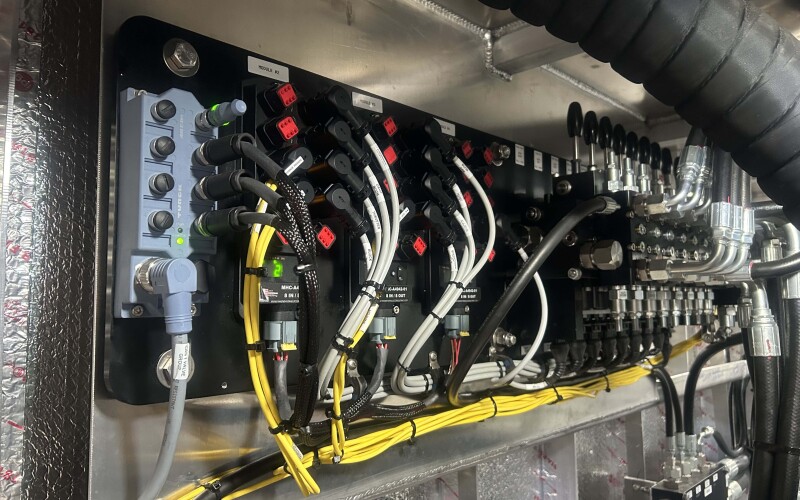
Severn notes that software his company developed for large yachts with 50 or more controls is being used on the smaller boats that Lowry is building.
“The software ties the system together with a monitoring screen,” says Severn. “There are sensors throughout and alarm management. You have visibility on the screen that helps with troubleshooting.”
Severn adds that with Starlink satellite services taking hold throughout the industry, his company will be able to receive the sensor information from the boats via satellite and help with troubleshooting if needed. “We sell an entire package,” he says. “TJ has a talented group of people, and they can install this without a lot of hydraulic engineering experience. They like it because it’s easier for them and the operator.” Severn notes that his systems run about 25 percent higher in terms of price but pay off in durability and serviceability.
On the ends of the hydraulic hoses, Lowry has installed a 10-inch Nyad bow thruster and anchor winch. “The crab block is from Warren Junes,” he says. “The boom is controlled with Pullmaster PL2s, and it has a PL5 for lifting.”
In the wheelhouse, Johnston has opted for Furuno systems, including TimeZero. “I’m going to get the WASP next year, maybe,” he says. “It will show the hard bottom and the soft. Crabs prefer soft.”
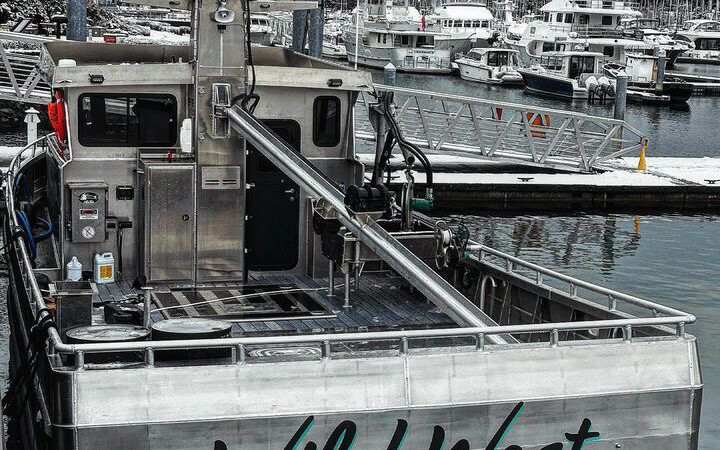
Johnston will take a crew of four, including himself, and the boat has four bunks down forward. The galley, such as it is, is minimalist and located on the port side of the wheelhouse, aft of a table and seats for four. “I’m expecting the season to open around the 20th of January,” he says. “We’ll fish out of Westport in the beginning. We have three days to set our pots, then a hold inspection, and then we’ll start.” Johnston will fish the state fishery at first, hauling through his 500 pots and then hauling again until he fills his boat—hopefully in two days or less. “We might put some extra boxes on deck and try to get 20,000.”
However, diversity is the key to survival in small-scale fisheries.
“When the crabbing slows down, we’ll move into Puget Sound and fish the Tribal fishery.” In the fall Johnston will continue to dive for sea urchins, cucumbers, and geoducks. “We also fish the Tribal prawn fishery,” he says. “But we get that quota pretty quick.”
Lowry looks forward to getting the boat in the water. “We’re about 20 miles from the harbor at La Conner, I think we can get it down the road, I’m told we can.”
Johnston, eager to start making money with his $1 million investment, is ready to go. “I’ll lease a license for another year and then look at buying one,” he says.
